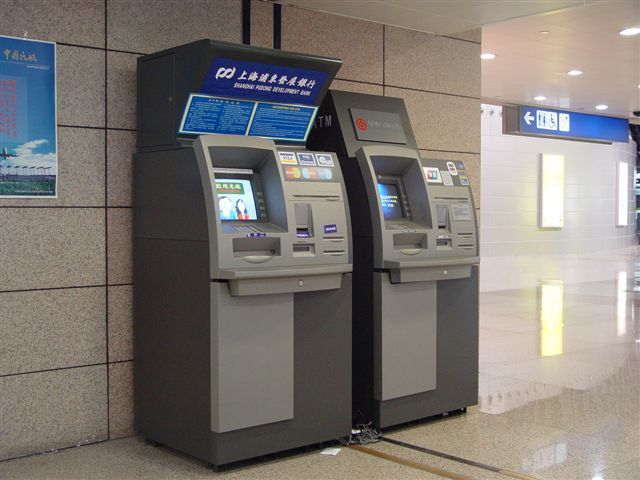The Future of Banking
In the ever-evolving landscape of modern banking, technology has become a driving force that is reshaping the industry. Traditional banking practices have undergone a profound transformation, thanks to technological innovations. This article explores the profound impact of technology on the future of banking, uncovering the key developments and trends that are revolutionizing the financial sector.
Introduction
The banking sector is no stranger to the transformative power of technology. Over the years, technological advancements have played a pivotal role in enhancing the efficiency, security, and accessibility of financial services. In today’s digital age, where smartphones and the internet are ubiquitous, banking is no longer confined to brick-and-mortar branches. Instead, it is an ever-present part of our daily lives, accessible with just a few taps on a screen.
Digital Transformation of Banking
1. Online Banking
The advent of online banking marked a turning point in the industry. Customers could perform transactions, check balances, and pay bills from the comfort of their homes. Online platforms also provided real-time access to financial information, empowering customers with a new level of control and convenience.
2. Mobile Banking
The rise of mobile banking apps further revolutionized the way people interact with their banks. Mobile apps offer a seamless and user-friendly experience, enabling users to manage their accounts, deposit checks, and even trade stocks from their smartphones.
3. ATMs and Cashless Transactions
ATMs have been around for decades, but their functionality has expanded. These machines now offer a wide range of services, from cash withdrawals to bill payments. Moreover, the shift towards cashless transactions has been accelerated, with contactless payments becoming the norm.
Fintech and Disruptive Innovations
The emergence of fintech (financial technology) companies has brought new levels of competition and innovation to the banking sector. These tech startups are nimble, customer-centric, and often unburdened by legacy systems, making them powerful disruptors.
4. Peer-to-Peer Lending
Peer-to-peer lending platforms have created alternative lending opportunities outside the traditional banking system. Individuals and small businesses can now secure loans directly from investors, cutting out the middleman.
5. Cryptocurrencies and Blockchain
The rise of cryptocurrencies and blockchain technology has opened up new horizons for banking. Blockchain ensures secure and transparent transactions, while cryptocurrencies like Bitcoin and Ethereum have the potential to transform the way we store and transfer value.
6. Artificial Intelligence and Chatbots
AI-driven chatbots and virtual assistants have become essential in providing customer support and streamlining operations. They can answer queries, process transactions, and provide personalized recommendations.
Enhanced Security Measures
As banking transactions increasingly move online, the importance of security cannot be overstated. Banks have invested heavily in cybersecurity measures to protect their customers’ data and financial assets.
7. Biometric Authentication
Biometric authentication methods, such as fingerprint and facial recognition, have become mainstream. These technologies provide a higher level of security and convenience.
8. Two-Factor Authentication
Two-factor authentication adds an extra layer of security to online banking. It requires users to provide a second piece of evidence to prove their identity, such as a temporary code sent to their mobile device.

Regulatory Changes
Governments and financial institutions are adapting to the changing landscape by implementing new regulations and standards to ensure the stability and security of the financial system.
9. Open Banking
Open banking initiatives are creating a more interconnected financial ecosystem. Banks are now required to share customer data with authorized third parties, fostering innovation and competition.
10. Compliance and Reporting
Regulatory technology (RegTech) solutions are helping banks comply with complex regulations more efficiently. These solutions automate compliance tasks, reducing the risk of errors and non-compliance.
The Future of Banking
The future of banking is not just digital; it’s intelligent, customer-centric, and more efficient. The integration of technology in banking will continue to evolve, with advancements like quantum computing, 5G connectivity, and the Internet of Things (IoT) playing vital roles.
11. Quantum Computing
Quantum computing has the potential to revolutionize data analysis and encryption, making transactions faster and more secure.
12. 5G Connectivity
The rollout of 5G networks will enhance the speed and reliability of mobile banking, enabling real-time transactions and high-quality video conferencing with financial advisors.
13. Internet of Things (IoT)
IoT devices will play a role in making banking more convenient. Smart appliances and wearables can provide real-time financial information and facilitate seamless transactions.
Conclusion
Technology has fundamentally altered the landscape of banking, making it more accessible, efficient, and secure. Traditional banking practices are giving way to digital and intelligent banking solutions. To stay competitive and meet customer expectations, banks will need to embrace these technological advancements and continue to adapt.
The impact of technology on the future of banking is profound, and it’s a journey that is far from over. As we look ahead, we can anticipate even more innovations that will shape the way we manage our finances. For additional tips and information about the future of banking, check out this post here to learn more.





